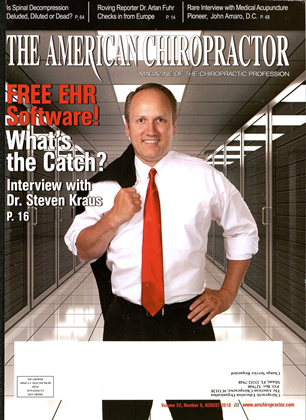History and Presenting Symptoms The patient is a 32 year-old female who has been building up a running program for weight loss and wellness. She reports a recent onset of pain around her right ankle and heel, which is becoming worse as she gradually increases the length of her longest runs. She plans to participate in a 10-mile run in two months, but is concerned that her heel pain is worsening. She has been taking over-the-counter anti-inflammatory drugs after each run, but has persisting pain that she rates around 4.0 on a 10cm. VAS scale. Exam Findings Vitals. This active woman weighs 146 lbs, which at 5'5" results in a BMI of 24. She reports that she has lost a little over 10 lbs. in the past year, and is no longer considered overweight. She is now a vegan and is quite careful about her diet. She does not consume alcohol or use tobacco products, and her blood pressure and pulse rate are at the lower end of the normal range. Posture and gait. Standing postural evaluation finds generally good alignment, with intact spinal curves, and no lateral listing of her pelvis or spine. She demonstrates a mild bilateral knee valgus (more prominent on the right), and increased Q-angles when standing (27° on the right and 25° on the left). There is also medial bowing of the Achilles tendons with calcaneal eversion, especially on the right. Bilateral hyperpronation and foot flare are noted during gait screening; this is also more prominent on the right. Chiropractic evaluation. Motion palpation identifies a limitation in right sacroiliac motion, with moderate tenderness and loss of endrange mobility. The lumbar spine is moderately tender throughout, and several compensatory fixations are identified in the thoraco-lumbar region. Orthopedic and neurological provocative testing of the spine and pelvis is negative. Primary complaint. Examination of her right ankle reveals generalized swelling of the entire Achilles tendon, which is moderately tender to palpation. All right ankle ranges of motion are full and pain-free, except dorsifiexion. which is slightly limited by tightness, not pain. Manual muscle testing finds slight weakness in plantar flexion, when compared to the left side. Imaging No X-rays or other forms of musculoskeletal imaging were requested. Clinical Impression Overuse Achilles tendinosis complicated by lower extremity biomechanical stress. This is accompanied by sacroiliac joint motion restriction and compensatory thoraco-lumbar fixations. Treatment Plan Adjustments. Specific adjustments for the SI joints and thoraco-lumbar region were applied as needed. Manipulation of the left talus during traction was performed in order to increase the range of ankle dorsifiexion motion. Stabilization. Flexible, custom-made stabilizing orthotics were provided to support the arches and decrease calcaneal eversion, and to reduce the medial biomechanical stress on the lower extremities. The orthotics were constructed of viscoelas-tic shock-absorbing materials in order to reduce heel-strike impact and the eccentric contraction of the ankle plantar flexor muscles in the calf. Rehabilitation. Initially, the patient was taught to perform daily self-mobilization to increase left ankle dorsiflexion motion, along with marble pick-up and towel-scrunching exercises to improve the coordination of her foot intrinsic muscles. Once she had her orthotics. she added standing Achilles tendon stretches—first with the knee straight, and then with a bent knee. Response to Care She was restricted to walking for the first two weeks, and once she had adapted well to the stabilizing orthotics she was permitted to incorporate progressively longer periods of running. At six weeks she returned to her training program with no recurrence of heel pain, and she was able to complete the 10-mile run with no significant problems (although at a slower pace than originally planned). Following the successful completion of her run, she was released to a self-directed home stretching program (after a total of 10 visits over three months). Discussion While the previous (and still quite common) term for this condition was "Achilles tendinitis," the more accurate and histologically correct description is "tendinosis." As in this case, there is usually no history of acute trauma or a specific inflammatory event. There is, however, frequently a longstanding biomechanical irritation that must be identified and corrected. Dr. John J. Danchik, the seventh inductee to the AC A Sports I hill of Fame, is a clinical professor at Tufts University Medical School and formerly chaired the U.S. Olympic Committee V Chiropractic Selection Program. Dr. Danchik lectures on current trends in sports chiropractic and rehabilitation. \
 View Full Issue
View Full Issue






